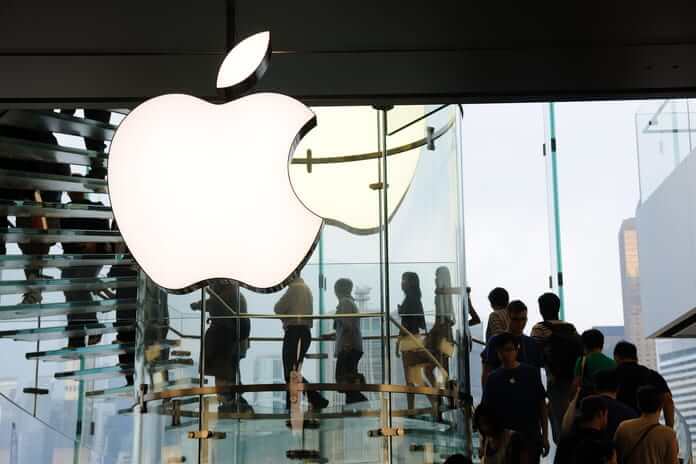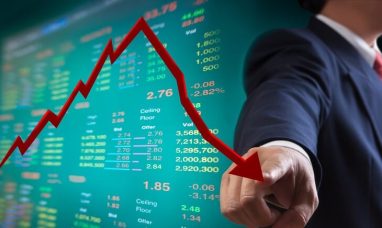Apple stock (NASDAQ:AAPL) is under pressure after it was revealed that the firm abandoned plans to raise iPhone 14 manufacturing later this year after an expected jump in demand failed to materialize.
Apple Stock Investors’ Questions
Investors in Apple (NASDAQ:AAPL) are faced with several important questions, one of which is whether or not the installed base of iPhone customers will show enthusiasm for the iPhone 14, the latest generation of the company’s flagship product, which was launched at the beginning of September. The iPhone model lineup is responsible for more than half of the company’s income. It is the engine behind the expansion of the company’s services division, which encompasses a wide range of areas, from music to payments. Because Apple has a greater presence in the consumer market than most other hardware businesses, there have been some concerns over the impact of the slowing macroeconomy on the demand for new phones.
According to a report that was published on Tuesday night by Bloomberg, Apple (NASDAQ:AAPL) has reportedly abandoned a previous plan to increase production of the iPhone 14 for the second half of the calendar year 2022 by six million units, bringing the total number of units produced to 96 million from 90 million. Instead, the company plans to maintain its original production goal of 90 million units. That would be roughly on par with the manufacturing of the iPhone 13, a device from the previous generation.
Investors are discouraged by that data, but experts who are positive about Apple are arguing that there is less to this report than meets the eye and that demand for the higher-end models in the range continues to surpass Apple’s capacity to create them.
The real story on iPhone 14 demand, which is a distinct consumer preference for the higher-priced versions of the new lineup, is being obscured by the headline news, according to Wedbush analyst Dan Ives.
Ives has an Outperform rating and a target price of $220 on Apple stock. Ives says this news overshadows the real story on iPhone 14 demand.
In his opinion, demand for the iPhone 14 Pro accounts for between 85% and 90% of the product mix, whereas demand for the iPhone 13 accounts for around 65%, which suggests “far higher” average selling prices. According to a research note by Ives, “wait times have stretched into early November for several Pro models, and we retain our conviction that Apple is moving manufacturing from the base model to Pro across Asia ahead of [the] Christmas season.”
Ives adds that he is “not wavering” on his belief that demand for the iPhone 14 Pro is “strong.” This demand should enable Apple (NASDAQ:AAPL) to “push through near-term macro challenges far better than expected by the Street,” according to Ives.
Erik Woodring, an analyst at Morgan Stanley, shares the opinion of his colleague that the article from Bloomberg is “more bark than bite.”
In a research note, Woodring, who has an Overweight rating on Apple stock and a target price of $180, notes that the lead times for the iPhone 14 Pro Max and Pro continue to be in the range of four to five weeks. This is among the longest for any model launched in the last six years, but there is a minimal wait required for the lower-end iPhone 14 and iPhone 14 Plus models. Woodring has a target price of $180. Woodring mentions that he had already been projecting second-half output at 90 million units before he made this comment.
According to Wording, “It is still early in the iPhone 14 cycle, and the next three to five weeks will remain critical in determining the strength of the iPhone 14 cycle.” This is because the supply chain will receive additional iPhone demand feedback from the early post-launch period, and iPhone will be recalibrated accordingly.
During trading on Wednesday, Apple shares fell by almost 4%, bringing the stock’s total loss since the debut of the iPhone 14 to approximately 7%. In addition, investors are getting rid of semiconductor stocks associated with mobile phones. STMicroelectronics STM –2.64% (STM) is down 4%, Qualcomm QCOM –1.17% (QCOM) is down 2%, Skyworks Skyworks Solutions (SWKS) is down 2%, and Skyworks Skyworks Solutions (SWKS) is down 2%. The share price of Taiwan Semiconductor (TSM) has decreased by 2.5%, while Hon Hai Precision Industry (HNHPF), which is also referred to as Foxconn, has decreased by 3%.
Barron’s asked Apple (NASDAQ:AAPL) for a statement, but the company did not provide one in response. The corporation does not make any comments on its production intentions as a matter of policy.
Featured Image: Megapixl © Bedo















